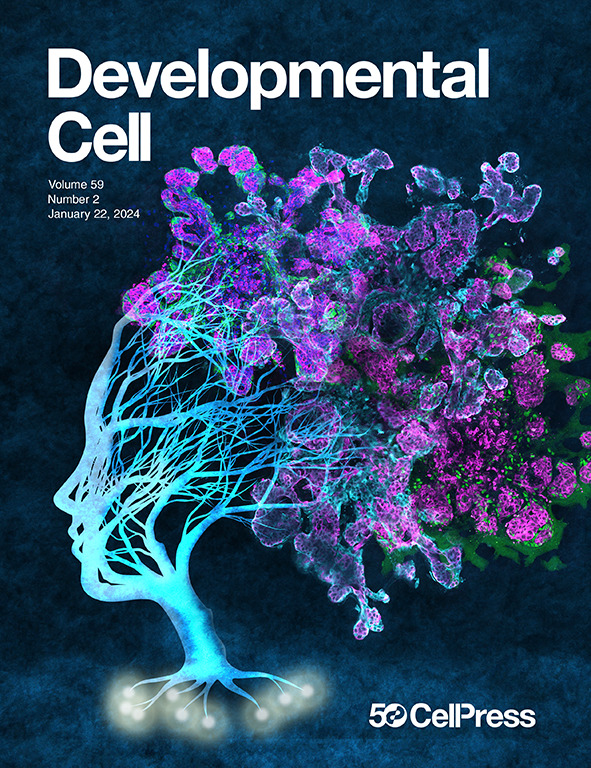Paraoxonase-like APMAP maintains endoplasmic-reticulum-associated lipid and lipoprotein homeostasis
IF 10.7
1区 生物学
Q1 CELL BIOLOGY
引用次数: 0
Abstract
Oxidative stress perturbs lipid homeostasis and contributes to metabolic diseases. Though ignored when compared with mitochondrial oxidation, the endoplasmic reticulum (ER) generates reactive oxygen species requiring antioxidant quality control. Using multi-organismal profiling featuring Drosophila, zebrafish, and mammalian hepatocytes, here we characterize the paraoxonase-like C20orf3/adipocyte plasma-membrane-associated protein (APMAP) as an ER-localized antioxidant that suppresses ER lipid oxidation to safeguard ER function. APMAP-depleted cells exhibit defective ER morphology, ER stress, and lipid peroxidation dependent on ER-oxidoreductase 1α (ERO1A), as well as sensitivity to ferroptosis and defects in ApoB-lipoprotein homeostasis. Similarly, organismal APMAP depletion in Drosophila and zebrafish perturbs ApoB-lipoprotein homeostasis. Strikingly, APMAP loss is rescued with chemical antioxidant N-acetyl-cysteine (NAC). Lipidomics identifies that APMAP loss elevates phospholipid peroxidation and boosts ceramides—signatures of lipid stress. Collectively, we propose that APMAP is an ER-localized antioxidant that promotes lipid and lipoprotein homeostasis in the ER network.

对氧磷酶样APMAP维持内质网相关的脂质和脂蛋白稳态
氧化应激扰乱脂质稳态,导致代谢疾病。虽然与线粒体氧化相比被忽视,但内质网(ER)产生活性氧需要抗氧化剂质量控制。通过对果蝇、斑马鱼和哺乳动物肝细胞的多生物分析,我们将对氧磷酶样C20orf3/脂肪细胞质膜相关蛋白(APMAP)表征为内质网定位的抗氧化剂,可抑制内质网脂质氧化以保护内质网功能。apmap缺失的细胞表现出内质网形态缺陷、内质网应激和依赖内质网氧化还原酶1α (ERO1A)的脂质过氧化,以及对铁凋亡的敏感性和载脂蛋白脂蛋白稳态缺陷。同样,果蝇和斑马鱼体内APMAP的耗竭也会扰乱载脂蛋白脂蛋白的体内平衡。引人注目的是,化学抗氧化剂n -乙酰半胱氨酸(NAC)可以挽救APMAP的损失。脂质组学发现,APMAP缺失会增加磷脂过氧化,并增强神经酰胺-脂质应激的特征。总的来说,我们提出APMAP是内质网定位的抗氧化剂,促进内质网中脂质和脂蛋白的稳态。
本文章由计算机程序翻译,如有差异,请以英文原文为准。
求助全文
约1分钟内获得全文
求助全文
来源期刊

Developmental cell
生物-发育生物学
CiteScore
18.90
自引率
1.70%
发文量
203
审稿时长
3-6 weeks
期刊介绍:
Developmental Cell, established in 2001, is a comprehensive journal that explores a wide range of topics in cell and developmental biology. Our publication encompasses work across various disciplines within biology, with a particular emphasis on investigating the intersections between cell biology, developmental biology, and other related fields. Our primary objective is to present research conducted through a cell biological perspective, addressing the essential mechanisms governing cell function, cellular interactions, and responses to the environment. Moreover, we focus on understanding the collective behavior of cells, culminating in the formation of tissues, organs, and whole organisms, while also investigating the consequences of any malfunctions in these intricate processes.
 求助内容:
求助内容: 应助结果提醒方式:
应助结果提醒方式:


